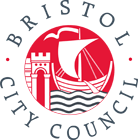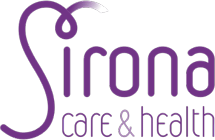University of Rochester visits Bristol
A group of scientists and academics from the University of Rochester in New York State visited Bristol on 17-19 November to find out more about the public health work going on in the city.
- 15th December 2014
A group of scientists and academics from the University of Rochester in New York State visited Bristol on 17-19 November to find out more about the public health work going on in the city. The group included Nancy M Bennett, Professor of Medicine and Public Health Sciences and Director, Centre for Community Health, Steve Feldon, chair of the University of Rochester Department of Ophthalmology and Director of the Flaum Eye Institute, and Scott Steele, Director for Operations of the NYS Centre of Excellence for Data Science at the University of Rochester.
The mission of the Centre for Community Health at the University of Rochester is to join forces with the community to eliminate health inequalities and improve health through research, education, and service. The centre was established by the University of Rochester Medical Centre to develop and expand academic-community health partnerships dedicated to improving the health of their community, focusing on prevention. The aims of the centre mesh with those of Bristol Health Partners, and the health specialisms in Bristol more generally.
The visitors had a packed schedule, including meetings with Health Integration Team (HIT) directors, the Elizabeth Blackwell Institute, the National Institute for Health Research Collaboration for Leadership in Applied Health Research and Care West (NIHR CLAHRC West), the West of England Academic Health Science Network (WEAHSN) and Bristol Health Partners. Their visit was hosted by Professor Lars Sundstrom, Director for Partnerships for the Elizabeth Blackwell Institute and Director of Enterprise and Translation at the WEAHSN, and Lisa Wheatley, Programme Manager for Bristol Health Partners and the Elizabeth Blackwell Institute.
Nancy M Bennett said: “Our group had an enlightening and exciting visit to Bristol. We are especially grateful to Lars and Lisa for all the planning that made the visit so educational and fun. Highlights included the trip to the Jenner Museum, the Bristol Health Partners executive group meeting, the deeper look into the HITs and the CLAHRC, and an introduction to DECIPHer IMPACT. We learned much about your approaches to population health improvement that may be applicable to our similar efforts, and identified several areas for potential collaboration including HIT projects linking to our Clinical and Translational Science Institute.”






